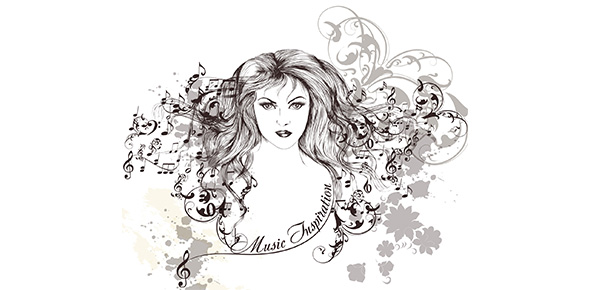Related Flashcards
Related Topics
Cards In This Set
| Front | Back |
|
Horse Panel cave painting, pigment on limestone, Paleolithic. France (Chauvet Cave)
They used the natural bump in the cave to sugest 3D animals. The legs of the Bison suggest movement.. Abstract markings—lines and dots—are found throughout the cave. There are also two unidentifiable images that have a vaguely butterfly or avian shape to them. This combination of subjects has led some students of prehistoric art and cultures to believe that there was a ritual, shamanic, or magical aspect to these paintings. |
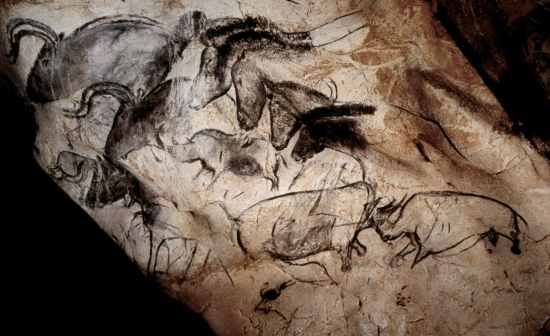 |
|
Venus of Willendorf, limestone with red ochre, Paleolithic. Austria
Her belly button is a natural crevis in the rock. People exagerate what they look like because of what they really look for. |
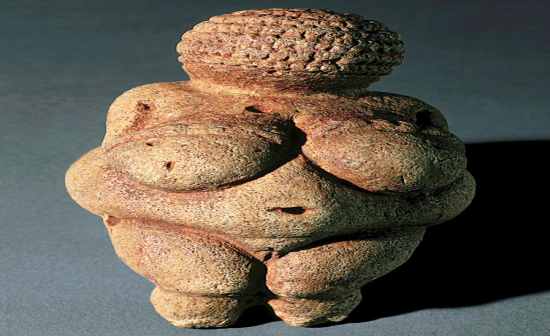 |
|
Stonehenge, various stones, Neolithic, England (Salisbury Plain) is one of the most recognizable monuments of the Neolithic world. It was built in three different phases. The stones in the horseshoe of trilithons are arranged by size; the smallest pair of trilithons are around 20 feet tall, the next pair a little higher and the largest, single trilithon in the south west corner would have been 24 feet tall. This effect creates a kind of pull inward to the monument, and dramatizes the outward Northeast facing of the horseshoe. Although there are many theories, it is still not known how or why these subtle refinements were made
|
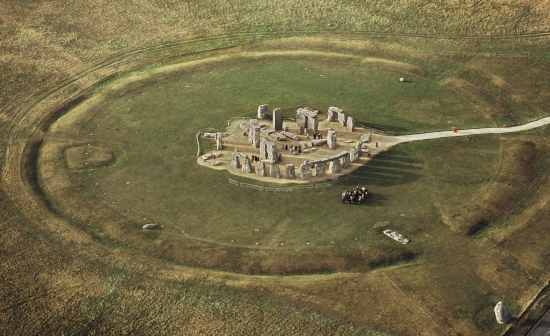 |
|
Bison atlatl, ivory, Paleolithic. France.
This bison is licking itself. The person who made it used its curvature to make this bull look 3D. It is not only art but it is used as a spear and put on an atlatl to kill or catch food. |
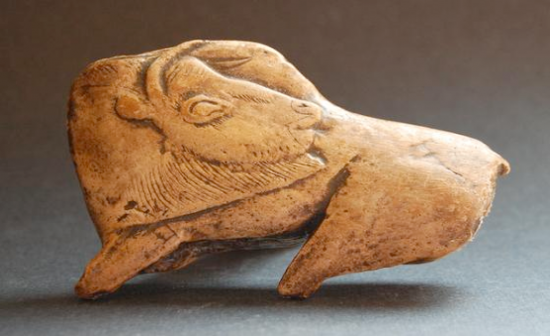 |
|
Stele of Naram Sin, limestone, Ancient Near East (Akkadian)
hieratic scale of crowned king Naram-Sin above his soldiers shows his victory blessed by the 3 stars (gods) |
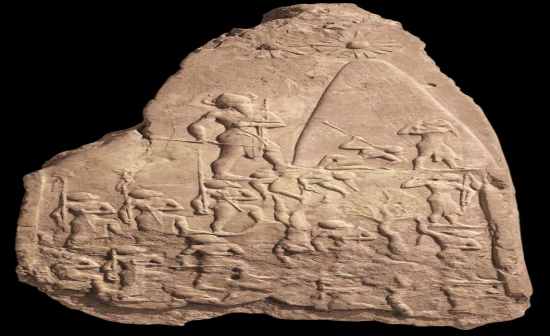 |
|
Stele of Hammurabi Babylonian Art
stele diorite earliest law codes ever written sun god giving hammurabi "telling hammurabi" right to give rules |
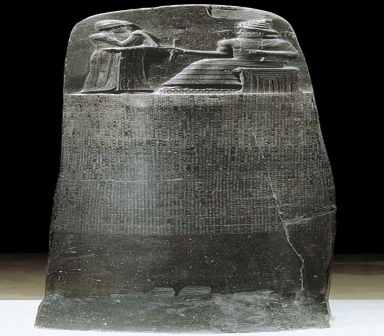 |
|
Queen’s Bull Lyre, wood, gold, lapis lazuli, Ancient Near East (Royal Ur cemetery)
The colors are special;pure lapis(blue) is found in Afganahstan mountains on the beard. Bulls are symbolic to kings. The lyre’s panel depicts a hero grasping animals and animals acting like humans—serving at a banquet and playing music typically associated with banquets. The bottom panel shows a scorpion-man and a gazelle with human features. The scorpion-man is a creature associated with the mountains of sunrise and sunset, distant lands of wild animals and demons, a place passed by the dead on their way to the Netherworld. |
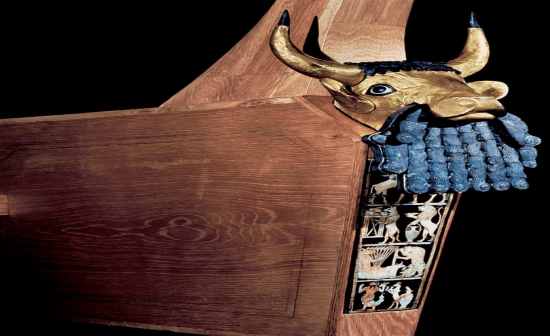 |
|
Ziggurat of Ur, mud brick, Ancient Near East, Sumerian
This is the city in the Bible where Abraham lives. Made by the king Ur-Nammu of the Third Dynasty of Ur for the moon goddess Nanna, the divine patron of the city state. The structure would have been the highest point in the city by far and, like the spire of a medieval cathedral, would have been visible for miles around, a focal point for travelers and the pious alike. As the Ziggurat supported the temple of the patron god of the city of Ur, it is likely that it was the place where the citizens of Ur would bring agricultural surplus and where they would go to receive their regular food allotments. In antiquity, to visit the ziggurat at Ur was to seek both spiritual and physical nourishment. |
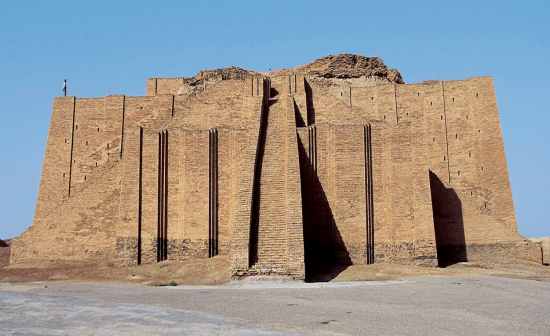 |
|
Funerary mask of Tutankhamun (King Tut), gold, turquoise, lapis lazuli, glass.Ancient Egypt. Probably one of the best known pharaohs of ancient Egypt, Tutankhamun was a minor figure in ancient Egyptian history. The boy king of 18th Egyptian dynasty was the son of the powerful Akhenaten, also known as Amenhotep IV, and most likely one of Akhenaten's sisters. His short reign of eight to nine years accomplished little, but the discovery of his nearly intact tomb in 1922 has led many to unravel the mysteries to his life and death.
|
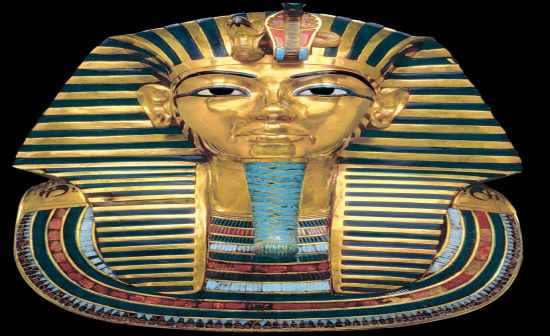 |
|
Pyramid of Khufu (the Great Pyramid) at Giza, limestone and granite, Ancient Egypt.
The king's chamber is accessed via the 26-foot-high (8-meter-high) Grand Gallery, which was sealed off from thieves by sliding granite blocking systems. The Great Pyramid was the centerpiece of an elaborate complex, which included several small pyramids, five boat pits, a mortuary temple, a causeway, a valley temple, and many flat-roofed tombs for officials and some members of the royal family. |
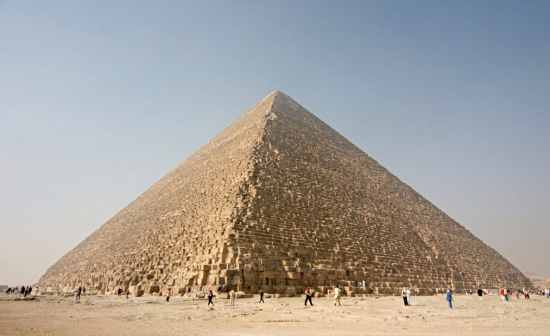 |
|
Pyramid of Khufu (the Great Pyramid) at Giza, limestone and granite, Ancient Egypt.
The king's chamber is accessed via the 26-foot-high (8-meter-high) Grand Gallery, which was sealed off from thieves by sliding granite blocking systems.
The Great Pyramid was the centerpiece of an elaborate complex, which included several small pyramids, five boat pits, a mortuary temple, a causeway, a valley temple, and many flat-roofed tombs for officials and some members of the royal family.
|
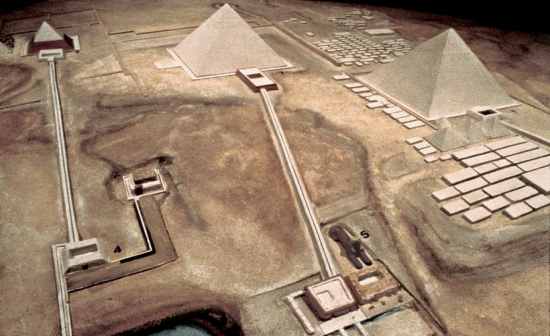 |
|
Tutmose (sculptor), Bust of Queen Nefertiti, painted limestone, Ancient Egypt (Amarna)
her name means the beautiful one has come. Her full lips are enhanced by a bold red. Although the crystal inlay is missing from her left eye, both eyelids and brows are outlined in black. Her graceful elongated neck balances the tall, flat-top crown which adorns her sleek head. The vibrant colors of the her necklace and crown contrast the yellow-brown of her smooth skin. While everything is sculpted to perfection, the one flaw of the piece is a broken left ear. Because this remarkable sculpture is still in existence, it is no wonder why Nefertiti remains 'The Most Beautiful Woman in the World.' |
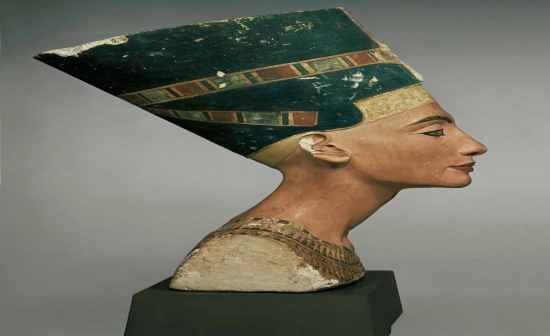 |
|
Menkaure and wife, greywacke with paint traces, Ancient Egypt. Now at Boston Museum of Fine Arts. Menkaure is portrayed in the familiar Egyptian pose standing as if at attention with his left leg extended forward, his arms held stiff at his sides, and his fists clenched holding some unidentified cylindrical objects. His stance appears assertive, indicative of his power.
|
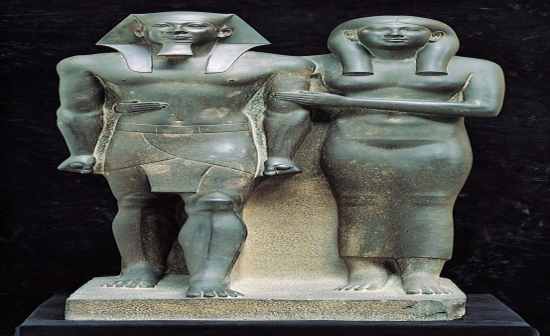 |
|
Terra Cotta Army of the Qin Emperor Shihuangdi, terra cotta with lacquer paint plus metal and wood weapons, China, Qin Dynasty symbolizing the main defending force that guarded the capital before Emperor Qin died.
|
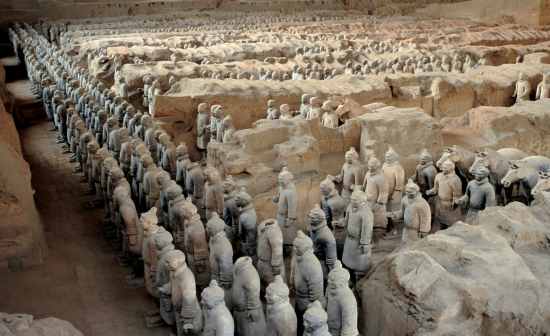 |
|
Yu vessel, bronze, Chinese, Shang Dynasty
|
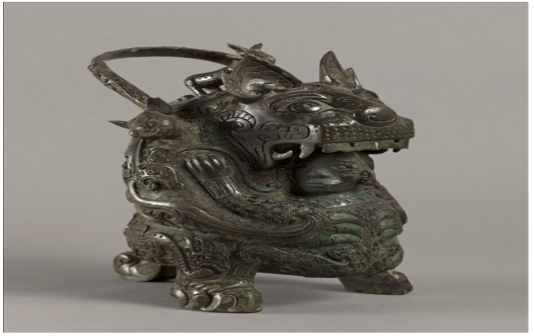 |




